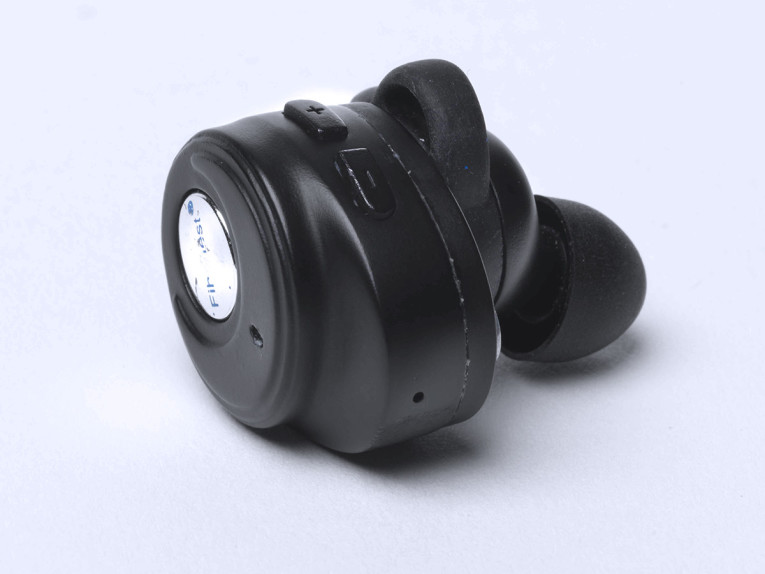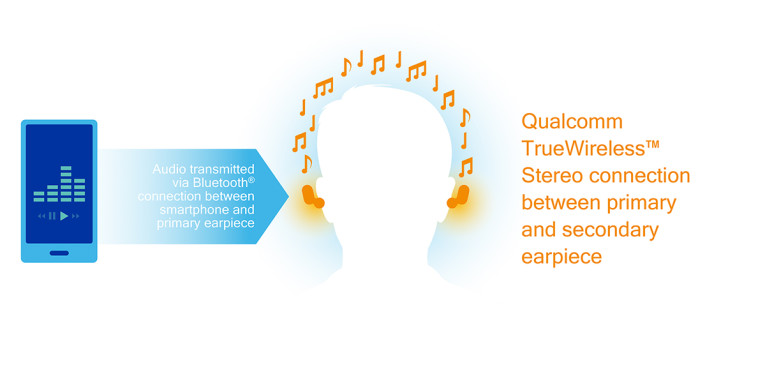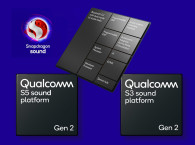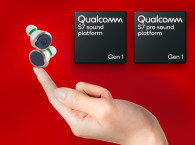
The next-generation Qualcomm TrueWireless technology is supported on the recently introduced QCC5100 series breakthrough Bluetooth audio System-on-Chip (SoC), which is designed to help reduce power consumption by up to 65 percent for voice call and music streaming compared to our previous generation device. This comprehensively integrated single-chip solution is designed to offer manufacturers a highly efficient way of controlling and managing the truly wireless connection to the earbuds and is available in an ultra-small form factor wafer-level 4mm x 4mm CSP package along with a comprehensive suite of software (Audio Development Kit) to support the development of new generation, highly compact, feature-rich wireless earbuds and hearables.
Running on QCC5100 SoCs, the updated Qualcomm TrueWireless Stereo technology is designed to offer consumers an improved user and listening experience regardless of smartphone platform and includes an easier pairing experience with no need to pair individual earbuds. The updates to the technology were also engineered to include the ability to autonomously role switch each earbud between primary and secondary roles in order to balance power consumption more evenly between the buds for longer playback time.

Qualcomm TrueWireless Stereo Plus is an additional mode of the technology designed to eliminate the need for cross-head Bluetooth transmission by simultaneously connecting the mobile device to both earbuds. In this new operating mode only the relevant audio content is engineered to relay to each bud helping to improve robustness and more evenly balance power consumption. When paired with a QCC5100 series based device and the Qualcomm Snapdragon 845 Mobile Platform Qualcomm TrueWireless Stereo Plus can help to reduce power consumption by up to an additional 10 percent, typically helping to deliver an extra hour of listening time before recharge is needed. Additionally, Qualcomm TrueWireless Stereo Plus supports an even simpler pairing experience when connecting earbuds to the mobile device and helps to reduce latency because both buds are connected directly to the smartphone.

"Our Bluetooth audio SoCs have been at the forefront of industry innovation for more than 15 years. The performance and flexibility of our solutions have directly supported the success of many of the most iconic headsets and headphones from leading consumer electronics brands," says Anthony Murray, senior vice president and general manager, voice & music, Qualcomm Technologies International, Ltd. "We are constantly looking to improve our technologies and platforms to help our customers differentiate their product offerings, and these enhancements in Qualcomm TrueWireless Stereo technology are designed to help them create the next generation of exciting and innovative truly wireless hearable devices that can support substantially longer music play time and voice call time."
Designs based on the QCC5100 Series using the enhanced Qualcomm TrueWireless Stereo are expected to be available in the second half of 2018.
www.qualcomm.com





